Automation is on the rise across every part of the marketing industry, and search is no different. AI-powered tools for paid search like broad match and Performance Max (PMax) have been changing the game when it comes to SERP domination.
The AI revolution in search is only accelerating: Google is rolling out new AI search capabilities like Bard and the Search Generative Experience, while rival Microsoft has continued to try and push its first-to-market advantage with the GPT-fueled New Bing. Soon enough, conversational AI search will be the new normal.
One consequence is the blurring of the once-clear distinctions between organic and paid search. It’s absolutely critical to break down the silos between SEO and PPC to consider the SERP holistically.
Two sides of the same coin: the benefits of a holistic approach to the AI-powered SERP
Brands often see paid and organic as two separate disciplines that have nothing to do with each other. As a result, they deploy completely disconnected strategies to get results, even if that results in inefficiencies, cannibalization, or a disconnected user experience.
That’s a big mistake, especially as AI drives continued SERP evolution. Brands can’t rely on their old toolsets if they want to succeed.
While it’s still very early days, conversational chatbot responses will likely further muddy the distinction between organic and paid results. This could be a positive for advertisers, since paid results would appear more organic, but might also create confusion for viewers or displace organic results.
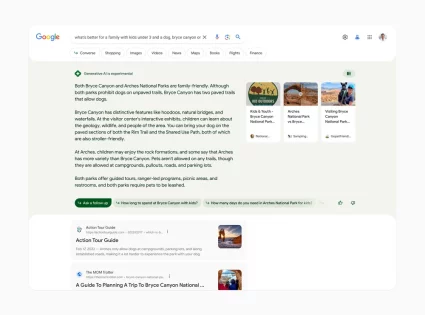
Source: Google
From a UX perspective, we still don’t know for sure how paid and organic results will ultimately show up once conversational search rolls out at scale. But it’s worth noting that search algorithms and chatbots both have the same goal: to give the user the answers they’re looking for.
In the end, paid and organic search are two sides of the same coin and need to deliver value for the user. That’s why you need to start bringing your paid and organic strategies together and take advantage of the overlapping benefits to dominate critical touchpoints on the customer journey, stretch your ad dollars even further, and seamlessly align messaging with user intent.
Heads: Organic tactics to support paid search
Google has advised search marketers for years to write site content with a human user in mind, not for the search engine. But conversational AI serves up much more detailed answers than the classic blue links of the traditional SERP. It pulls that information from search results, so you need to make sure your content answers questions and is optimized for the human users you ultimately want to engage.
Whether those pages are blogs, case studies, product descriptions, or something else, your content needs to not only check the box for your keywords but also deliver genuine value for your audience. Pulling potential customers in through the search page is only one part of the journey: once they’ve clicked, your content needs to add value, share something helpful, or at least keep things interesting.
That’s a place where paid search teams can fall flat; since they’re usually focused on conversion, they often rely on under-optimized landing pages featuring sub-par content. Making great content that’s liberally peppered with keywords (without negatively impacting the customer experience) is a mainstay of organic search, but it should also be a cornerstone of your paid-focused pages. If you want an ad to be featured in conversational search, you can’t take a shortcut: you’ll need to earn that placement.
Remember: even though landing pages built for paid campaigns might look very different than content built to rank organically, they still need to deliver an engaging customer experience. AI-powered search is all about providing a better way to connect people with the information they’re looking for; to move people to your site, whether that’s through paid or organic results, you need to bring your A-game. Plus holistic landing pages and better site content that are suitable for more than one channel or touchpoint will improve your conversion rates and drive costs down.
Taking action will also help you on the SERP right now. To win organically, you need to create great content and make sure it’s set up to rank. Then match the content with your brand’s target keyword sets on the paid side, too.
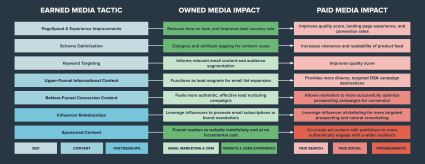
Once the content is live on your website, continue to refine and optimize for paid search by increasing keyword density within the content to improve your quality score (QS) and reduce costs per click (CPCs).
Tails: Paid tactics to support organic search
When it comes to paid search, AI has been a part of the marketing toolkit in the form of things like Smart Shopping campaigns for years–it just hasn’t always been clear to the public. That’s partially because Google used the term “automation” to refer to those tools until recently, when they changed the language to “powered by AI.”
AI is now taking a starring role in the form of new campaign types like Performance Max that open up more opportunities to generate business results from your paid search campaigns.
But the grey area around the placement of ads in conversational search results means paid search marketers need to stay on their toes. Google assures us that ads will still appear on the page in Sponsored sections, so make sure you’re keeping up with any new updates or guidance from Google.
So how can you make sure your paid tactics are ready for the new world of search?
Start by leveraging paid tactics to support organic results out on the SERP. One of the easiest ways to do this is by providing additional coverage for high-value keyword sets. If you can’t rank organically for some of those keywords because of high competition on the SERP, paid placements can ensure you still have a presence on the page.
While many searchers today skip over the top paid results on the page and jump right into organic, it’s better to appear in the “Sponsored” section than not at all. Current customers who are looking for your brand can still find you, and potential new customers will be exposed to your brand name. As results become more mixed and conversational in the future, your paid results might become even more important.
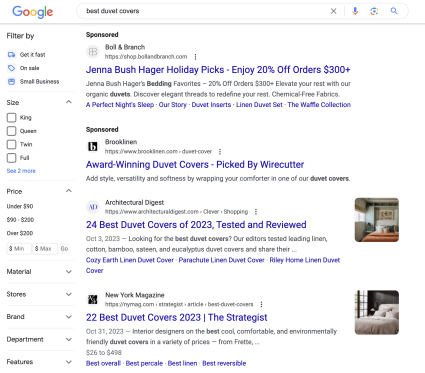
Source: Google
You can also use paid search to increase traffic to pages that aren’t getting enough clicks from organic search alone. This is especially useful for testing different types of content on your site, since very few pages individually get enough organic traffic to rapidly test the content itself, changes in configurations, or multiple creatives.
Paid search can boost the volume of users navigating to those pages so you can generate learnings more rapidly. Those insights will help you improve your content and eventually your organic rankings and conversion rates for both paid and organic search.
Bringing it all together: Paid and organic tactics that work in tandem
An integrated approach to the SERP will put your team in the best position to face the competition, today and in the future. So how can you create the ultimate hybrid strategy?
Maximizing your brand’s onsite conversion rate optimization (CRO) is a great place to start. Traffic from both paid and organic campaigns will convert at a higher rate if they’re arriving on pages with strong CTAs and content.
Once your site is optimized for conversion, you should look to dominate the SERP with a balanced approach combining paid and organic tactics.
Right now, each business can only have one ad involved in each auction in the ad space on the SERP, so each paid listing usually directs to a different competing site.
The only way for a business to capture more real estate on a given SERP is through organic results, which means developing strong, optimized content for pages targeting high-value keywords. If the page transforms as conversational search becomes more dominant, those organic results will serve as valuable fodder for responses.
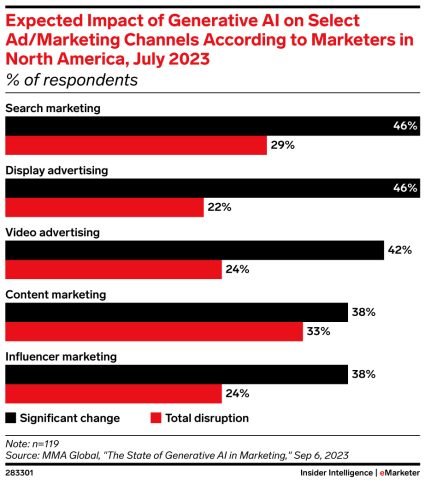
Source: eMarketer
As your organic keyword rankings improve, start to limit paid spending on the subset of keywords that are getting a suitable amount of traffic organically. Any conversions or purchases from those paid ads are probably not incremental; they would have come from the organic results anyway. You can reinvest that saved money elsewhere to get the maximum return on investment from your paid search spend, rather than doubling up on keywords you’ve already got covered.
If you’re too reliant on either paid or organic search, you’re missing the big picture, especially as the two become more intertwined through AI. Before conversational search becomes the default mode, make sure you’ve set the right foundation for continued success by taking a holistic approach.
Ready to up your game with AI-powered search? Our experts have all the insights you need to get started with PMax, the future of Google Ads.


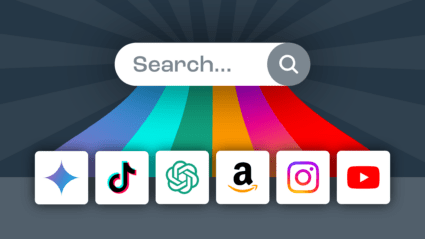


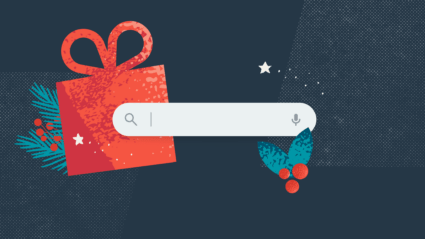
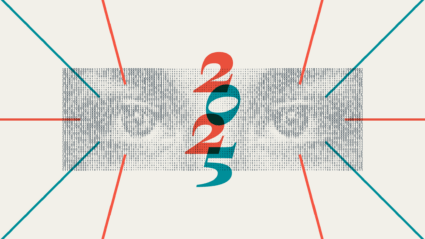
Responses